As one of the world’s most secretive and controversial countries; it’s no wonder North Korea intrigues so many people. In fact, a day tour to the border of South and North Korea is one of Seoul’s most popular tourist activities. Every day, thousands of people flock to the DMZ from Seoul to gain a glimpse of what life is like in one of the world’s most depraved dictatorships.
Visiting the DMZ was one of the most fascinating experiences I had in South Korea. It really opened my eyes to the humanitarian crisis occurring in North Korea and the sorrowful historical relationship it has with the south.
If there is one thing I recommend you to do in South Korea, it is 100% a visit to the DMZ!
So, what is it like to visit the North Korean DMZ? Here is a DMZ tour blog post on everything I experienced and learnt from my trip.
*This post may contain affiliate links meaning should you purchase a product via this link, I’ll earn a small commission at no extra cost to you. See my privacy and disclosure policy for more.*
But first…
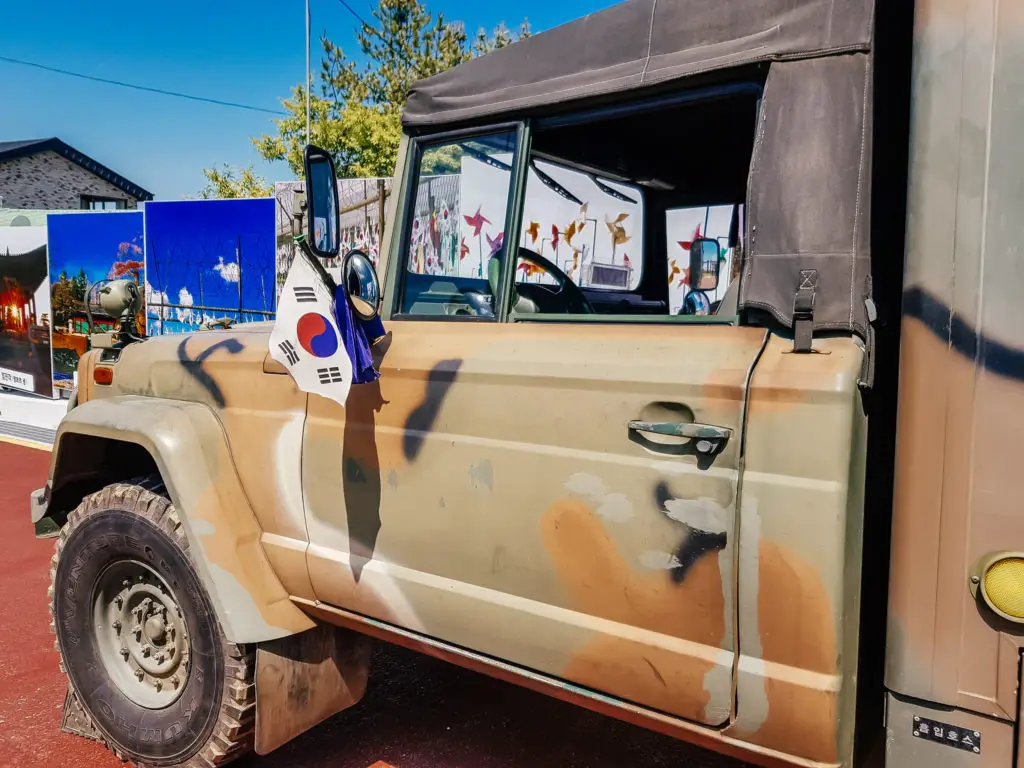
What Actually is A ‘DMZ’?
‘DMZ’ stands for ‘demilitarised zone’ which is an area agreed between two nations or military powers forbidding military installations, personnel or activities. Essentially, it’s a sort of non-threatening buffer area. In the Koreas, the DMZ is a kind of ‘belt’ alongside the border separating the two countries.
Despite the fact it’s meant to be a peaceful border, there are in fact hundreds of land mines still in the DMZ. Barbed wire fencing separates the areas and tonnes of military personnel are stationed just behind it. It’s undoubtedly a dangerous area, but one of the most popular tourists attractions in South Korea.
For me, one of the most interesting observations about the South Korean versus North Korean DMZ was how different they look.
On the South Korean side, aside from the observation area for tourists, the area is overgrown with trees and nature doing its own thing. On the North Korean side, it is flat and featureless. As our tour guide told us, apparently this is so they can catch anyone attempting to escape to the south.
For many people visiting Asia, a tour to the DMZ is the closest they will ever get to one of the world’s most secretive countries.
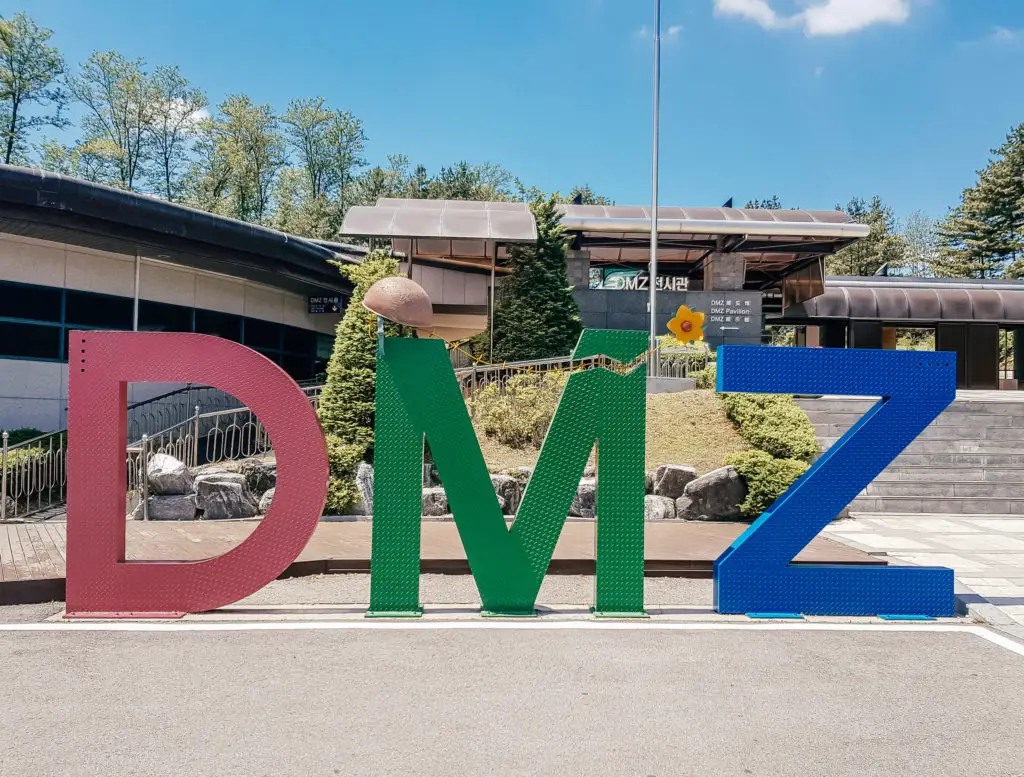
How To Visit the North Korea DMZ
Unfortunately you can only visit the North’s DMZ on a group tour, so that means you can’t visit it independently by hiring a car or a driver.
It’s bad news for those of you who hate joining an organised group (but it’s still worth it I promise!). However if you are willing to pay a premium price, I saw options to arrange a private trip with an accredited tour company.
I was contemplating booking a DMZ tour before I arrived into Seoul but experience has taught me that booking online is often more expensive and things can also change when you actually get to your destination.
Through my hostel, I decided to book the half day DMZ trip with Seoul City Tours. I did this the day before my planned visit. It was peak season, perhaps it is safer to book a few days in advance.
Seoul City Tours are meant to be the only tour company recommended by the KTO and Ministry of Culture, Tourism and Sports.
I initially wanted to do a full day tour, but you don’t actually spend any longer at the DMZ. They just add on lunch and a visit to a shopping district. I definitely didn’t see the point in paying extra for that!
There is also an option to visit the ‘JSA’ (Joint Security Area), where there is a joint conference room, Freedom House and the Bridge of No Return. The additional JSA option is popular largely because you can technically stand in North Korea.
Unfortunately, the tour company I went with didn’t offer this option. It seems there are only a few tour organisations that do. In hindsight, I would have liked to have gone but these particular tours do get booked up further in advance than other tours.
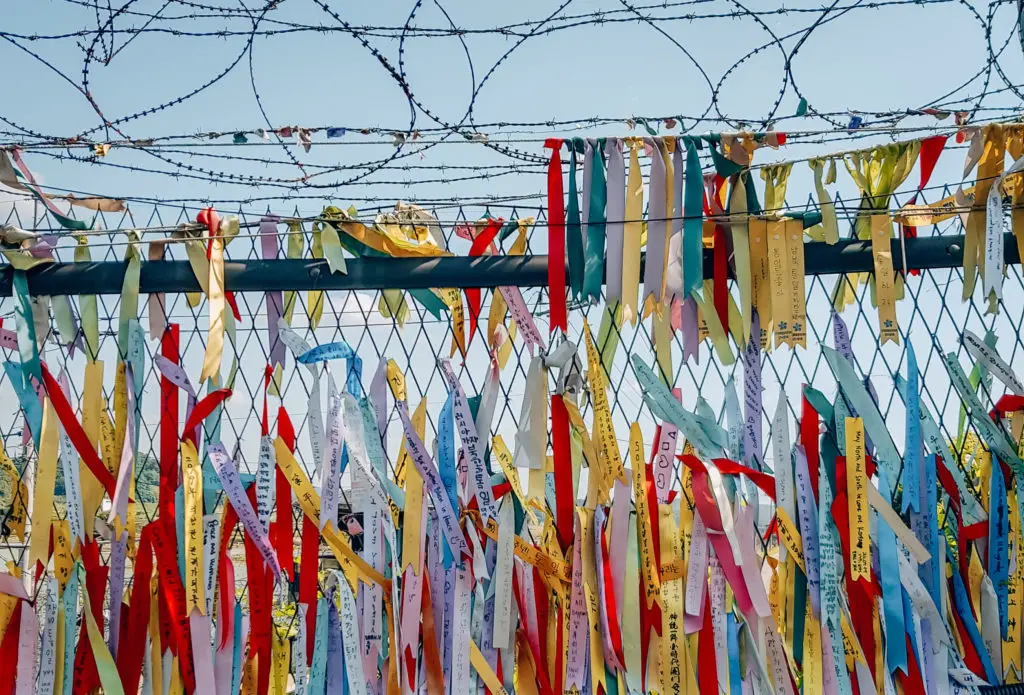
The DMZ Tour Rules
When you take a DMZ tour from Seoul, there are many rules and regulations you need to adhere to. After all, the DMZ North Korea border is a pretty risky area to visit!
What You Need to Know Before You Do a DMZ Tour:
- You have to take your passport. No exceptions! As you enter the DMZ, a guard will come onto the bus and check everyone’s passport. Although all you do is hold it up as he walks past, if you don’t bring it, you can’t do the tour. You’ll be left in Seoul!
- You must adhere to the strict dress code. So bear with me on this one: you can’t wear skimpy clothing, ripped jeans, shorts or open shoes like sandals when you visit the DMZ. Why? Because apparently in the past, North Korean guards have taken pictures of tourists in such attire and used them on North Korean propaganda. So unless you want to feature on North Korean posters saying that other nations can’t afford proper clothing, it’s best to dig out some trousers and trainers!
- The tour can be cancelled without notice and you won’t get a refund. Of course it’s a military and potentially dangerous area, and so tourist visits can be stopped whenever it’s deemed necessary. For example, in the instance of rising tensions at the border.
- If you visit the JSA (‘Joint Security Area) which is the closest part to North Korea you can get, you need to be prepared to sign a waiver saying that no one is responsible for any accident, injury or even your death! Again, for whatever reason such as the fact officials may need to use the area, a visit to the JSA can be cancelled with no prior notice.
- There are some areas where you cannot take photos, for example in the 3rd Infiltration Tunnel. You will be advised to put all your possessions, including phones and cameras in a free locker. Unless you are explicitly told not to, you can otherwise take any photos you want. However, you should not take photographs or make gestures to any North Korean guards should you see any.
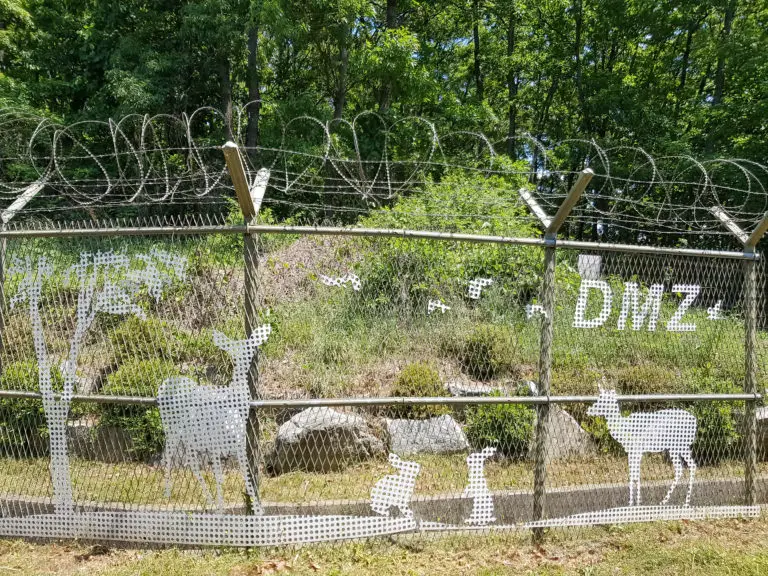
Other Useful Things to think about:
- Try and go on a day with good weather. Particularly, on a cloud-free day so you can actually see North Korea from the observatory. Of course this can be hard to plan, but if you have flexibility about which day you can go, look up the forecast and let the weather dictate which day you choose.
- Tuesdays and Saturdays are common days for cruises with thousands of Chinese tourists. Try to avoid these days if you can, just in case!
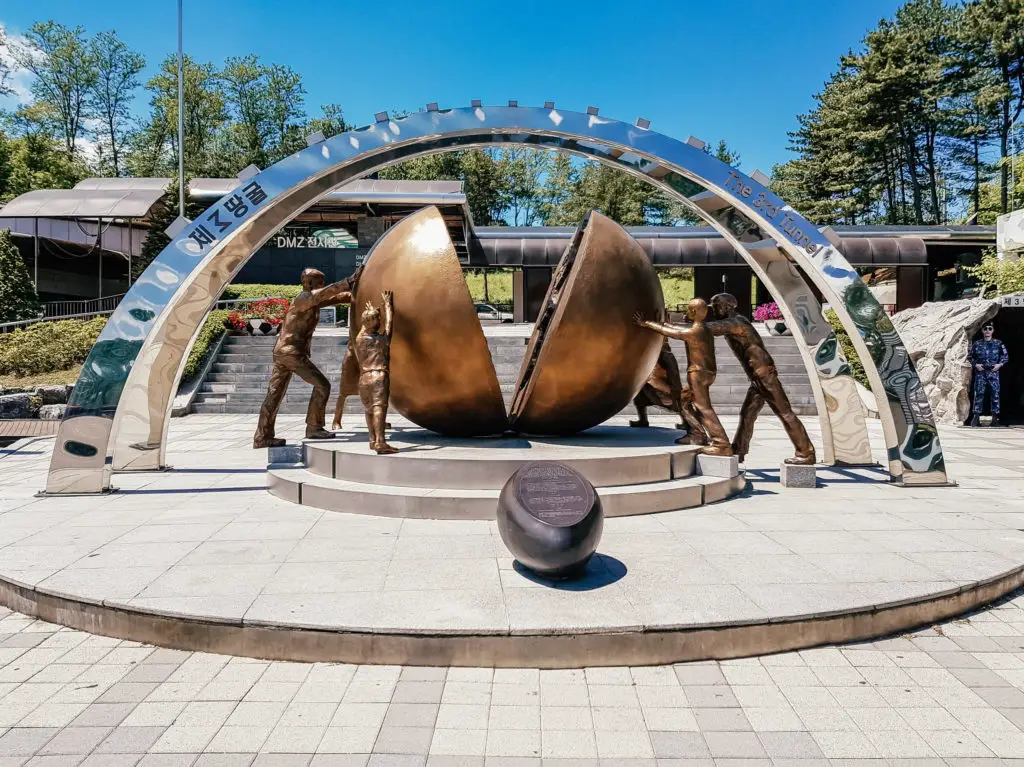
What Do You See On A DMZ Border Tour?
I was picked up from my hostel at 8am and driven to a meeting point to catch a bus. We left just after 8:30am and drove 50 minutes to the first stop, Imjingak Park.
Imjingak Park (Freedom Bridge)
The beautifully green Imhingak Park is pretty much the furthest north South Korean’s can get. The surrounding countryside you can see is South Korean territory, despite the fact that on the drive to the park, you can see North Korean mountains.
The park is famous for a number of reasons, the first being that it is the location of ‘Freedom Bridge’, an old rail road used by repatriated prisoners of war or soldiers returning from North Korea.
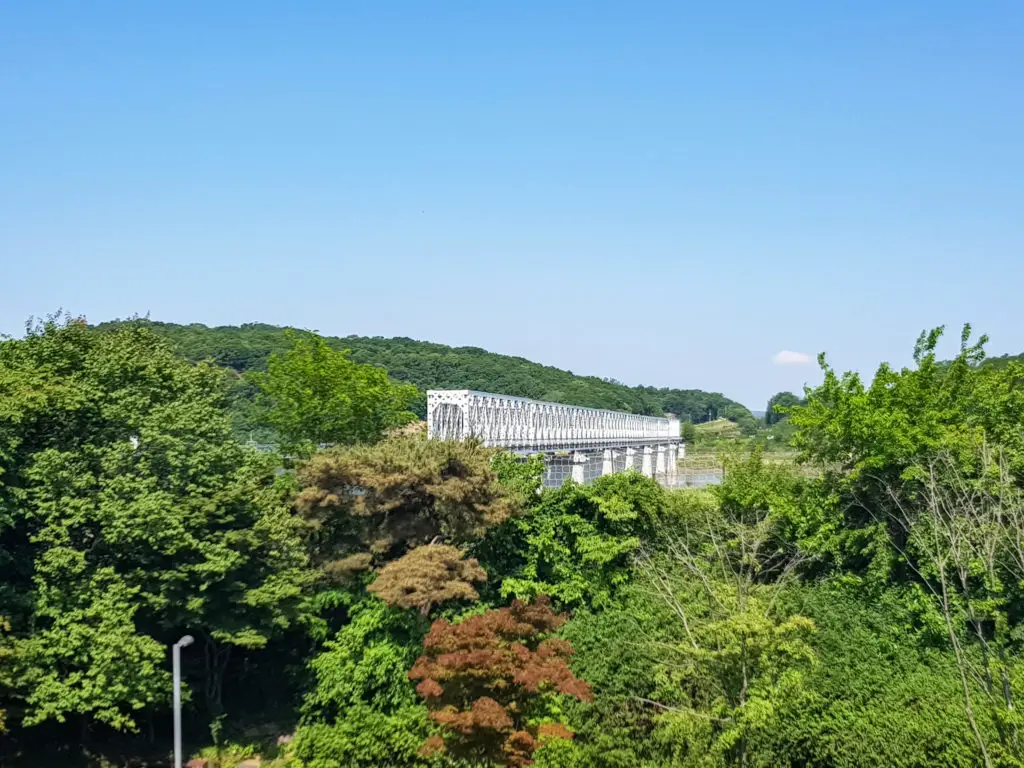
The rest of the park is full of memorials to the Korean war such as Mangbaeddan, a monument which allows displaced people whose hometowns are in North Korea, to bow down towards their family stuck on the other side, as a sign of respect during cultural events.
Another poignant memorial is a statue of a girl sat on a chair. It represents the ‘comfort women’ who were forced into sexual slavery by the Korean military during the war in Vietnam and the Japanese military during WW2.
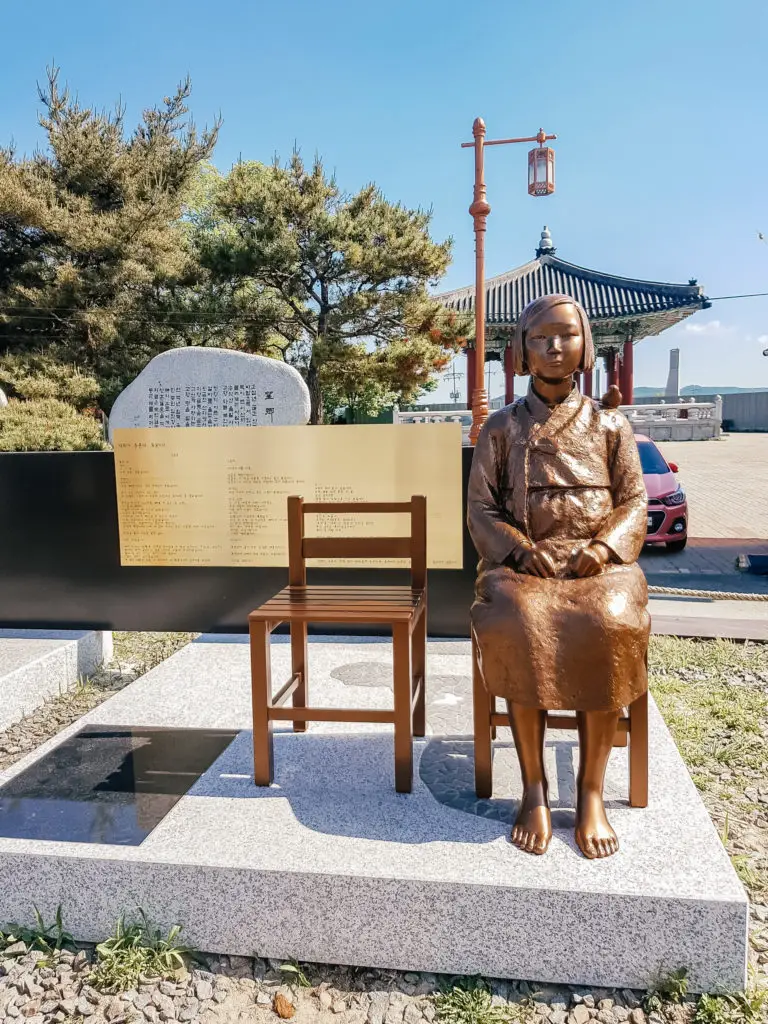
The visit to Imhingak Park on the tour is a very quick 30 minutes. It’s barely enough time to properly go to the observatory, cross the bridge, look at the monuments and the half bombed train. However I guess there’s still a lot more to see elsewhere!
After the park, the next stop is when the guard comes on board to check your passport.
It’s also worth noting that tours can visit the destinations listed below in different orders (but this what my company did).
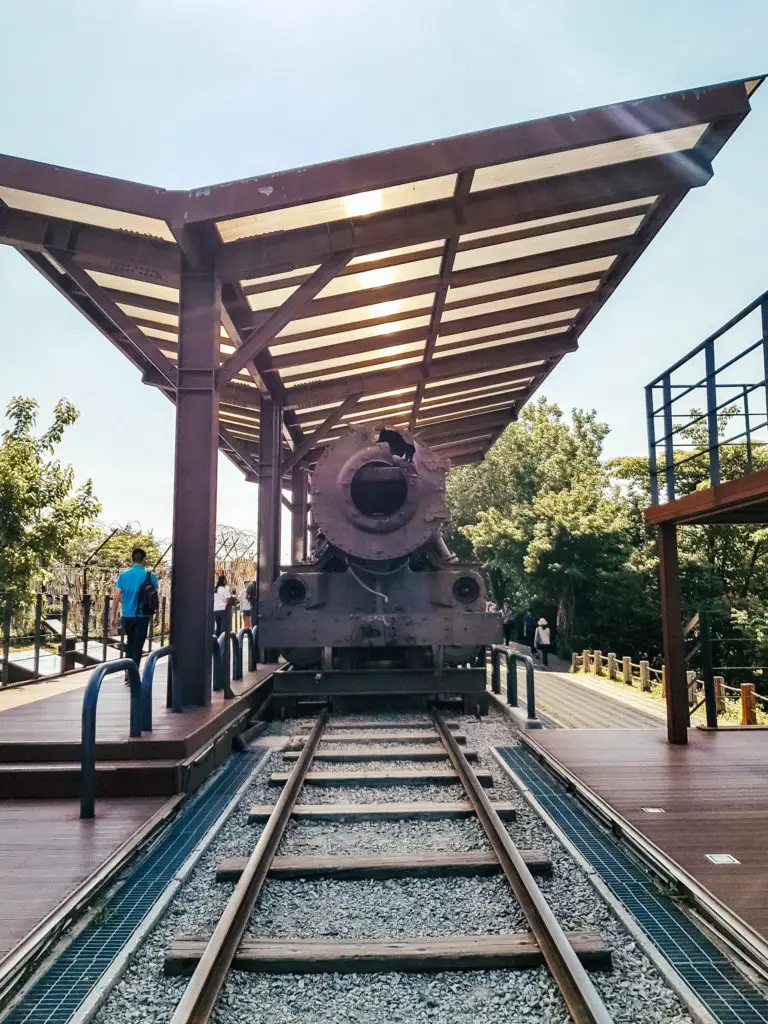
The Dorasan Observatory
The Dorasan Observatory was, in my opinion, the most exciting part of the tour. Not only do you get to learn so much about North Korea, you can also see right into the secret country using free telescopes.
I found it fascinating that you can watch North Korean farmers tending to rice fields. Looking at them working really moved me as only they truly know what it’s like to live in North Korea.
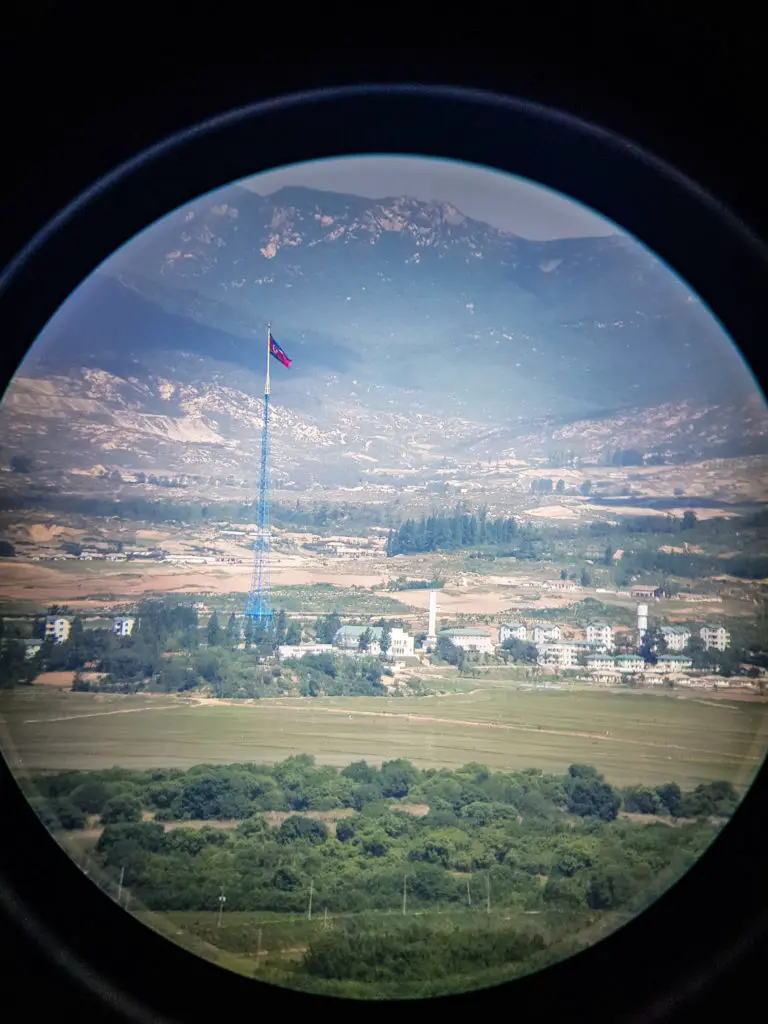
The flagpole you see on the above picture is actually the highest in the world. The residents of Daeseong-Dong, a village in the South Korean DMZ, once put up a flag. In retaliation, North Korea built one higher on their side. What ensued was a rather childish game of building taller and taller flagpoles, with the result being North Korea now having the tallest in the entire world!
The village underneath the North Korean flagpole was for many years, a completely fake town. All the buildings (including hospitals, childcare centres and houses) had painted windows and doors. From afar, it was meant to be the ‘picture-perfect’ North Korean village to lure any defectors back from the southern side.
The North Korean DMZ ‘fake village’ is now said to be partly occupied by citizens as South Korea owns a factory in North Korea.
The South Korean owners pay North Korean employees to run the factory, but the workers only take home $100 USD per month. Wages are taxed at 80% by the North Korean government as part of their communist ideology.
You can see the factory (which manufactures car parts) through the telescope.
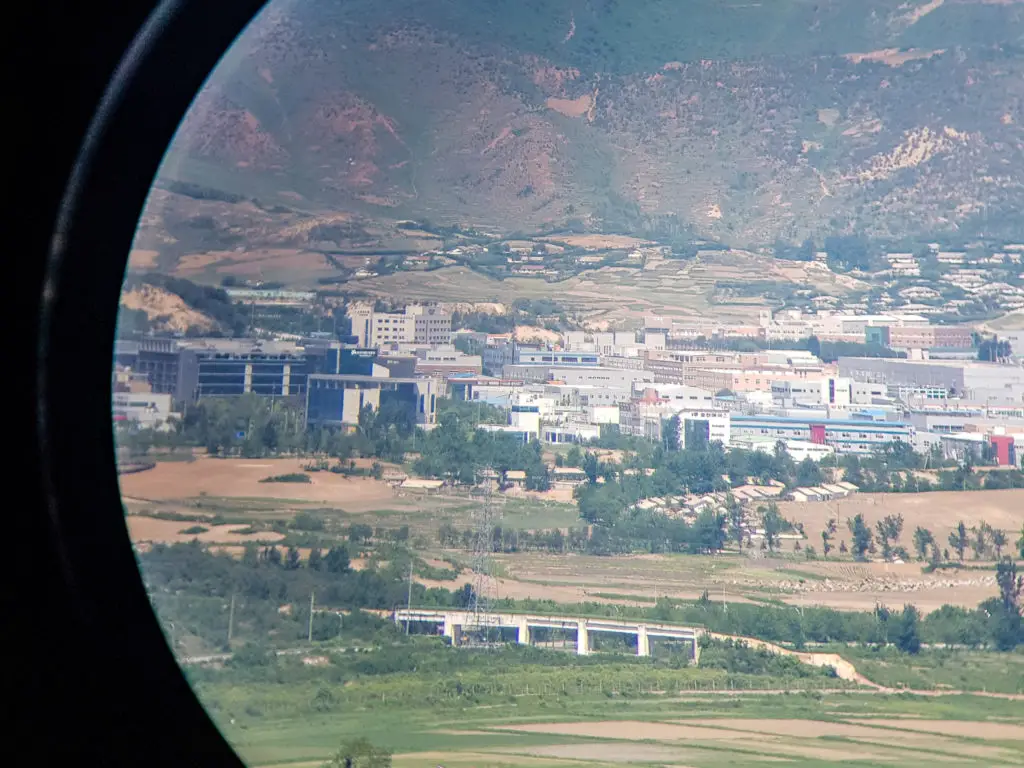
Flagpole races and fake towns aren’t the only examples of childish behaviour though!
The observatory is now peaceful, but before 2018, our guide told us it was once extrememly noisy. North Korea blasted propaganda on repeat towards South Korea 24/7 and in response, South Korea blasted K-pop back! And not any old k-pop – Gangnam Style!
I’m sure it’s a relief for everyone who lives and works there (as well as the wildlife!) that it’s quiet again now!
3rd Infiltration Tunnel
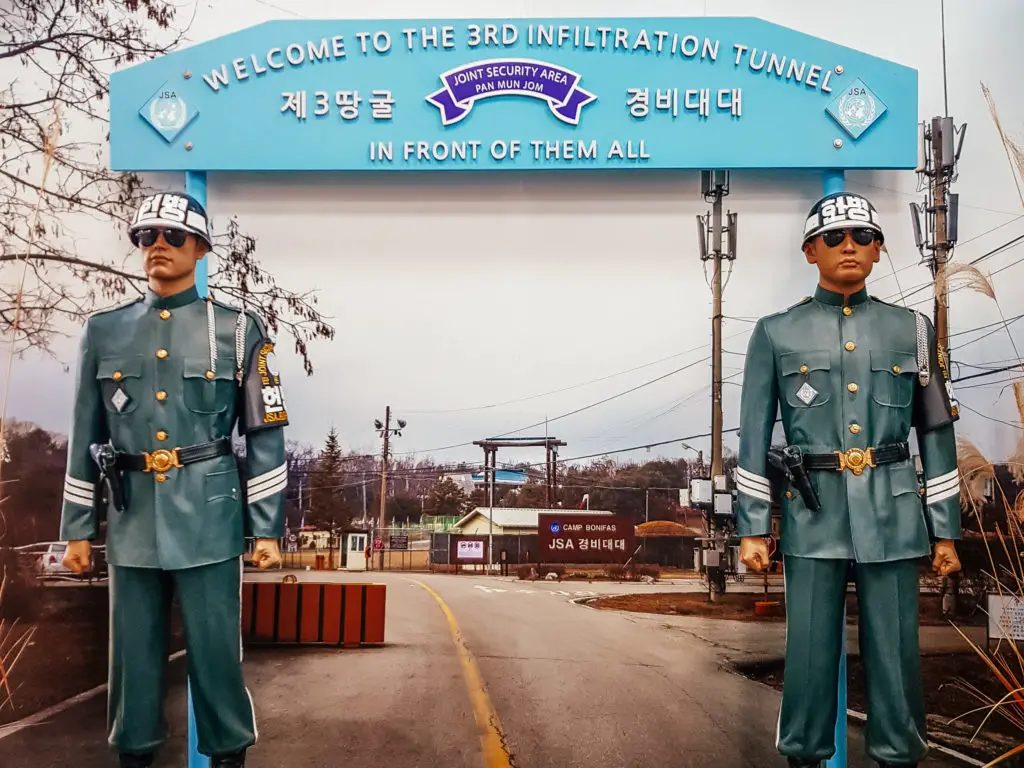
The 3rd Infiltration Tunnel is one of four known tunnels under the border of North and South Korea. It was only discovered when a defecting engineer, who escaped North Korea, told South Korean officials that it existed. The sole purpose of the tunnel was to invade South Korea – a claim that North Korea denied!
How the South Koreans managed to find the exact location of the tunnel is really fascinating. They placed PVC pipes filled with water every 2 metres around the area they suspected it was located. Eventually, three years later, one of the PVC pipes exploded from detonated dynamite underground, pinpointing the exact location of the North Korean tunnel!
The tunnel is a really cool part of the tour as it’s a very ‘hands on’ experience.
Once we arrived, we were ordered to put our belongings, including phones and cameras in free lockers (absolutely no photography is allowed!). We then donned a hard hat and begin the long, gradual descent underground.
The tunnel is dimly lit allowing you to see the holes that were chiselled to hold the tubes of dynamite.
Despite the fact the dynamite holes point towards the South, the North Korean’s denied the tunnel was dug by them at all. In fact, they blamed the south! Eventually North Korea gave in and agreed they dug it but said they were actually digging for coal!
Hilariously, as soon as it was discovered, North Korea sent soldiers down the tunnel to rub black coal all over the walls to try and justify the lie. You can still see a few black smears on the stone to this day, despite the fact there is no coal around for hundreds of miles.
Once you have walked a mile to the bottom of the tunnel, where South Korea have blocked it off, you can return the way you came.
If you’re claustrophobic or have bad knees, I would consider skipping this part. It gets narrower as you go down and the downward descent isn’t that easy on the legs!
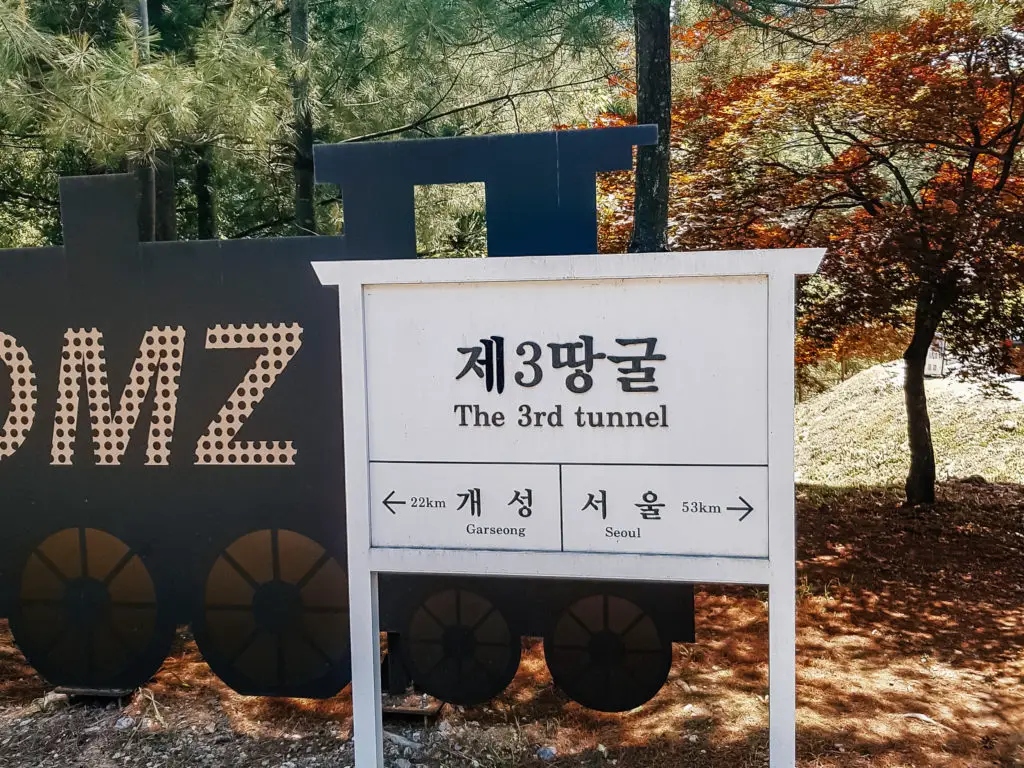
In the entrance complex there is a little souvenir shop. It’s the only place in the whole country (and anywhere outside North Korea) where you can buy North Korean products.
You can purchase a range of souvenirs including berry wine (sadly sold out when I was there!) and all sorts of rather weird and interesting looking spirits.
I bought a 70cl bottle of a pale brown North Korean whiskey for the equivalent of about $40AUD. After tasting it, it seems it is possibly made with mushrooms! I bought the whiskey as a novelty which is lucky considering it tastes absolutely terrible!
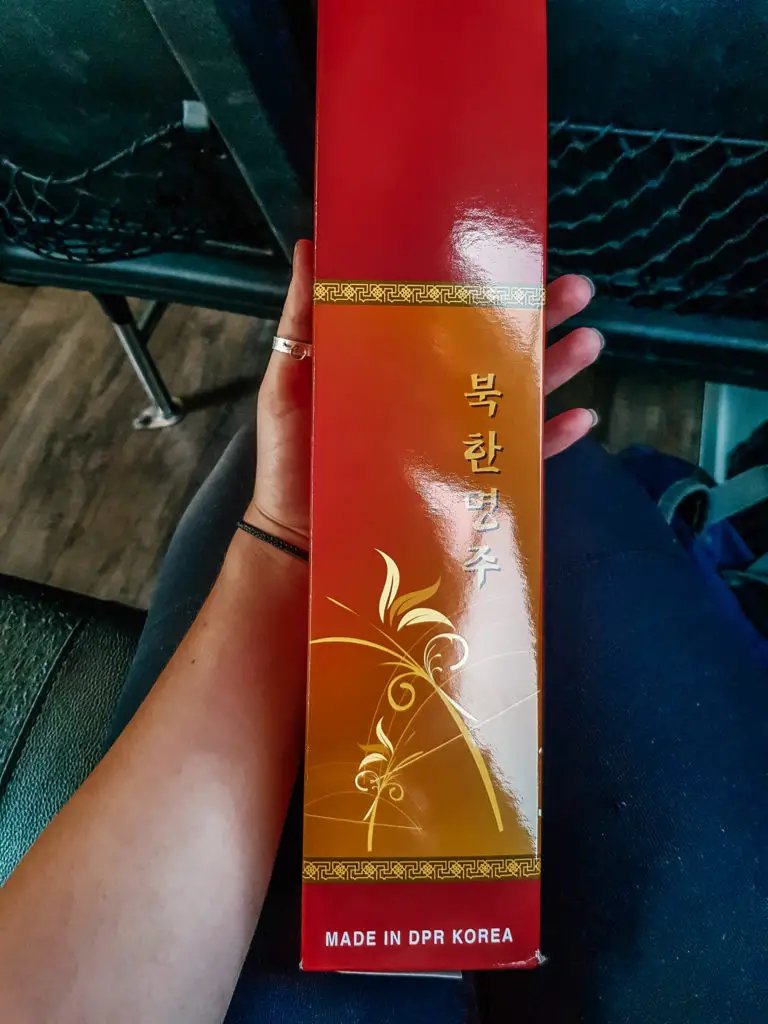
Dorasan Train Station
The last stop on my DMZ trip was to Dorasan Train Station, the station connecting Seoul to North Korea, China, Russia, and all the way across Europe.
Currently it is not used to it’s full capacity (only one train leaves each day from Seoul to this station). The train station was completed in 2002 as a rather touching gesture of unity by the South Koreans.
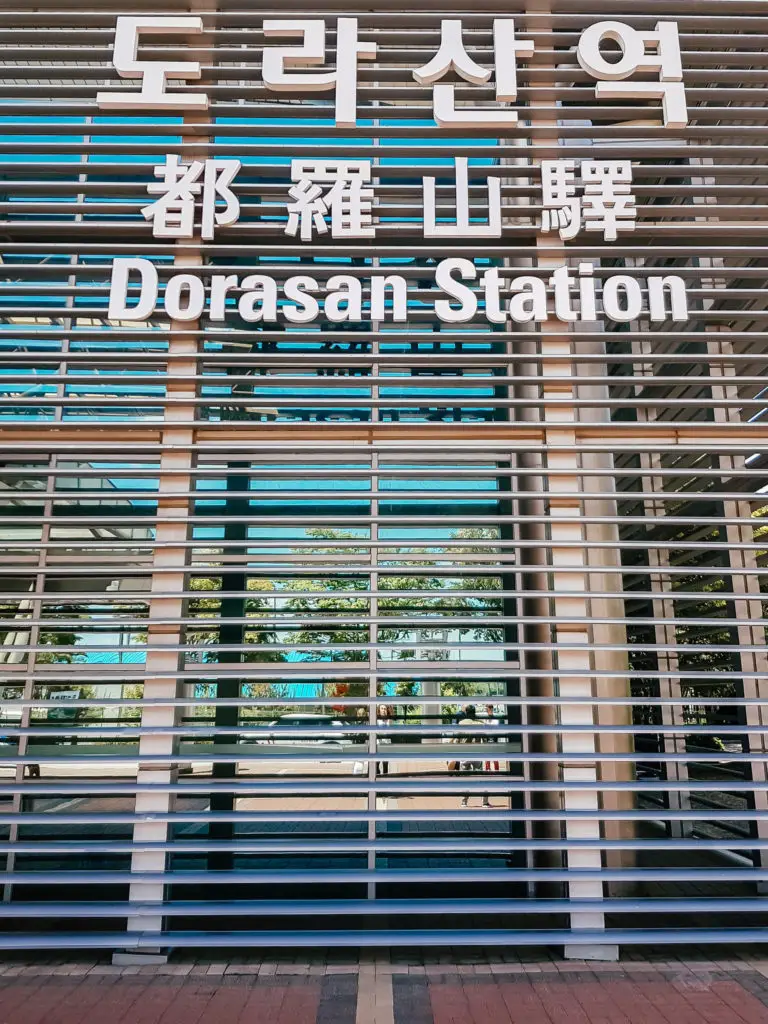
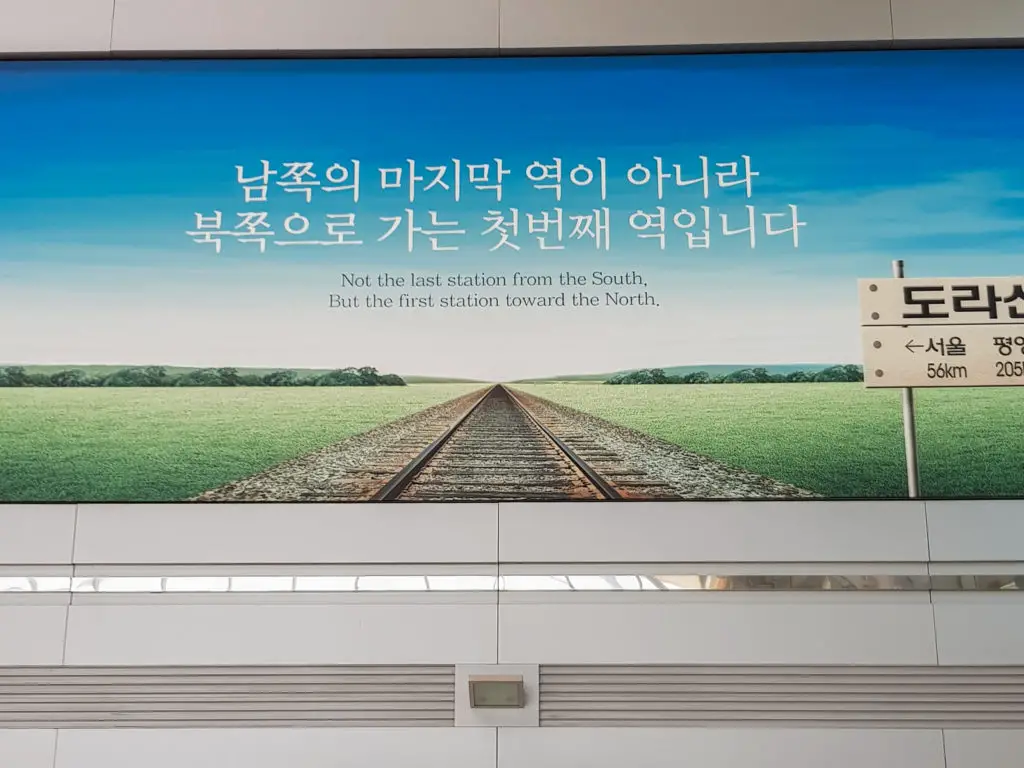
Although there isn’t all that much to see at the train station unless you want to pay for a ticket to watch the train come in from Seoul (if you’re there in time), there is a small exhibition.
The exhibition displays various pictures depicting historical events involving North Korea. There’s also a large billboard with the words of ex-US President George W. Bush taken from a speech about North Korea.
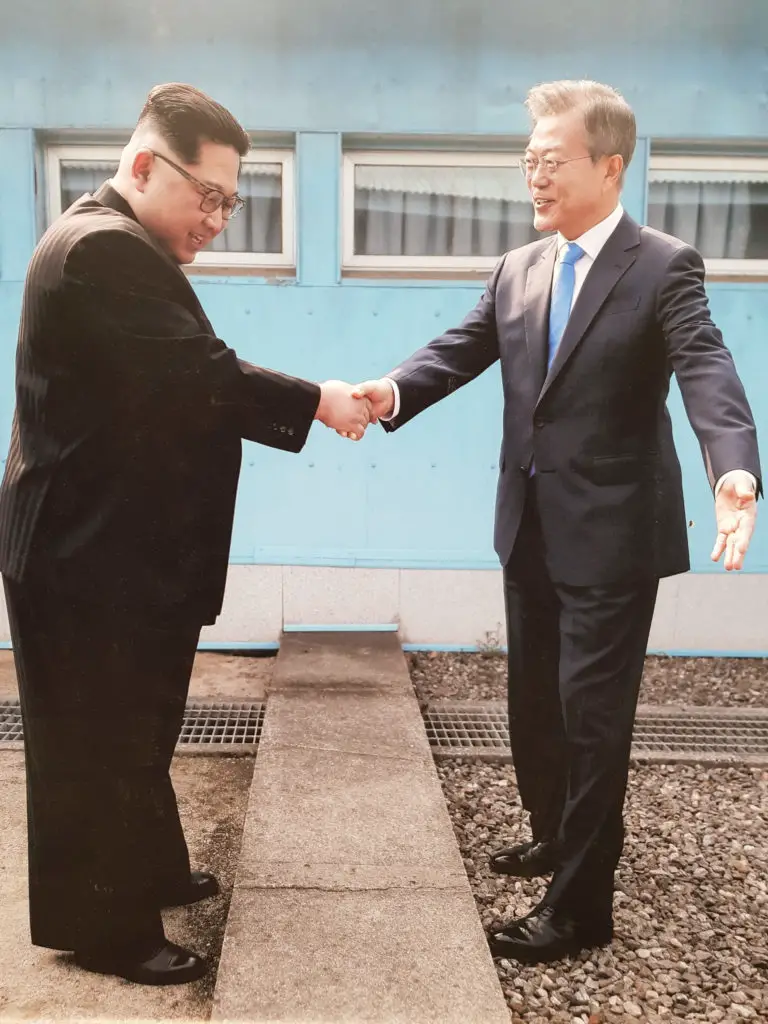
The speech by George Bush was actually really touching.
The most poignant thing for me was that apparently from satellites at night, South Korea is awash with light. North Korea in contrast is in complete darkness. Mr Bush stated that all South Korea want to do is to bring them into the light, share their wealth and reunite families torn apart through no choice of their own.
Visiting the DMZ at the border of North and South Korea was one of the most educational, heart-wrenching and to be honest, plain baffling experiences I’ve had in years. I hope that if you ever make it over to South Korea, you have the opportunity to go and learn about this turbulent modern history. If not, I hope this DMZ tour blog post has given you an interesting insight into what the DMZ is actually like.
If you’re in Seoul, here is a blog post with a list of other things you can’t miss during your visit.
DMZ tour blog post
Heading to South Korea Soon? Don’t forget these essentials!
Lonely Planet’s guide to Korea or Lonely Planet’s guide to Seoul.
Book your accommodation through Booking.com or Hotels.com.
To cover yourself for any unplanned situations, I use and would recommend World Nomads travel insurance.
To search and compare the best group tours and activities worldwide (with up to 50% off), use TourRadar.
Don’t forget to check the government visa entry requirements for South Korea for the passport you are travelling with.
For some travel inspiration for your next trip, how about Lonely Planet’s top 500 places to see… ranked?

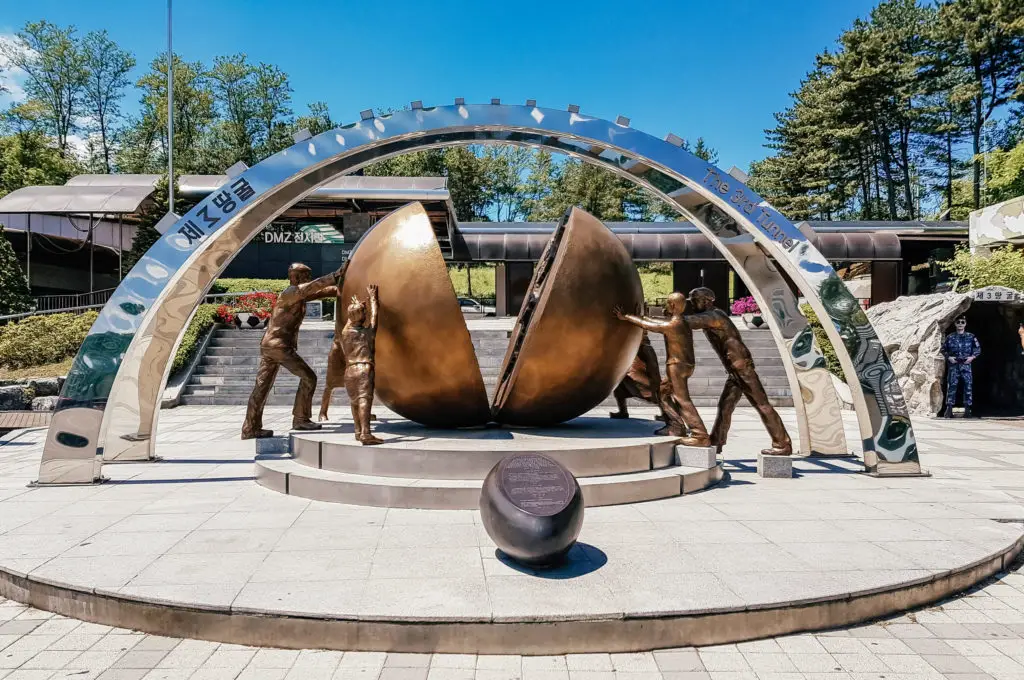
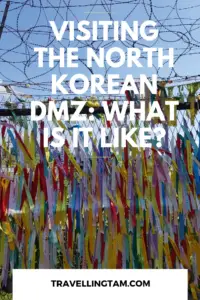
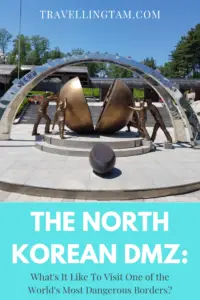
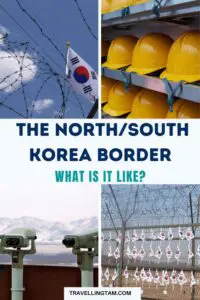
WOW I love reading posts about DMZ and I am so happy I found this. So much history and culture here!
Thanks! And absolutely! x
This is definitely such an interesting read! This place has so much history, I would love to visit!
Kasey Ma
http://www.TheStyleWright.com
Email: team@thestylewright.com
I hope you get to one day 🙂
This is so interesting! The dress code part definitely made me laugh a little, I can totally picture the propaganda!
-madi xo | http://www.everydaywithmadirae.com
I know right – it’s really hard to believe that they would skew something in this way!
Amazing history and photos! Sounds like an emotionally intense visit
It really was. Thanks for leaving a comment 🙂
very interesting trip, that I’m sure you will remember forever! Love the comfort women statue – we studied them in depth in my women’s history class in college. nice to get some public recognition for them
Absolutely. And the significance of having such a monument in such a busy tourist area can’t be overlooked! It’s something I wasn’t even aware of but have since researched! Thanks for your comment x
Such as interesting article to read. The fake town is hilarious, as is the flagpole competition too. I didn’t know taxes in NK were 80%, wow!
I know! I learnt so many amusing facts that will be great for a pub quiz one day haha..
This is fascinating! What an incredible experience and you had to sign a waiver?! Your photos are beautiful, thanks for sharing all this helpful info!
I didn’t but if you’re with a tour group who goes to teh JSA (Joint Security Area) then you have to! And thank you!
It seems so interesting and kind of scary at the same time. I would love ot visit, it is truly unique thing to do and your post describes it very well
Yes, very haunting but so educational! Thank you for your kind comment 🙂
After reading this post, I now regret not joining a tour to get there. My friend wanted to go but I didn’t think it was worth it. It’s actually very interesting…sigh…
Oh what a shame 🙁 It was probably my highlight of South Korea but also very sad at the same time. I guess it can always be done another time – you may never know if you’ll end up back!
I’ve always been so interested in visiting the north and south border! This was such an interesting article!
It was fantastic – I would 100% do it again too!
Utterly fascinating post on an area which is full of military and political tension.
Thank you!
Thank you so much for this post. This is one of those places you really don’t think you should visit but this has definitely changed my mind. Will be adding to our must visit places when heading to South Korea.
Even if you dont want to visit North Korea itself, coming to the DMZ is such an amazing insight as it is. I’m glad it will now be on your radar! Thanks for your comment!
Would love to be able to visit the DMZ one day. The history there is so heartbreaking.
I hope you get to Merrie, it’s incredibly moving!
This is fascinating! I’ve never wanted to do the government tours of North Korea, but this sounds really interesting! I love that you can see pockets of it. Love all the trivia in this post too, thanks for sharing!
Yes same here. I’m not sure I want to support tourism in a country that has deeper humanitarian issues. But the border gives you enough of an insight. Thanks for your comment!